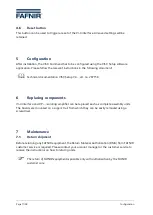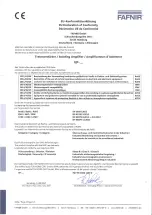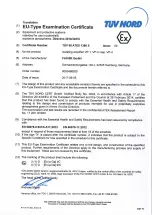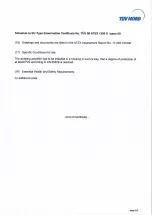
Page 11/28
Installation
4.3.2
Extension interface (RS-485)
The extension interface is a galvanically isolated RS-485 serial port through which data can be
transmitted to other system components (e.g. VISY-View Touch if the host interface is busy).
This interface is unidirectional. This means that data is only sent from VISY-Command to the
system components connected there. The system components receive the data without having
to send a request. This means that, in contrast to bidirectional interfaces, it is possible to
connect several system components (e.g. several VISY-View Touches) to the extension interface
in parallel. Theoretically, up to 31 system components can be connected to this interface.
By default, this interface is inactive. It can be activated using the VISY-Setup application. To
determine whether other configurations are required, please refer to the technical documenta-
tion supplied with the device to be connected.
Figure 5: Extension interface
If shielded lines are used, the shield must be placed on the PE connection. Please also observe
the installation instructions for the device to be connected to the interface. If the shield cannot
be fitted on both sides, it is possible to work with a shield fitted to one side of the VISY-
Command only.
The yellow TxD LED of the extension interface indicates data being transmitted through the
extension interface.
Do not connect the line shield to the interface ground (
⊥
/GND).
Please note that the longer the line length, the greater the probability of equipo-
tential currents flowing through a line shield earthed on both sides. Depending on
local rules and regulations, it may be necessary to provide an additional equipo-
tential bonding between the connected devices.
Extension
Host















































